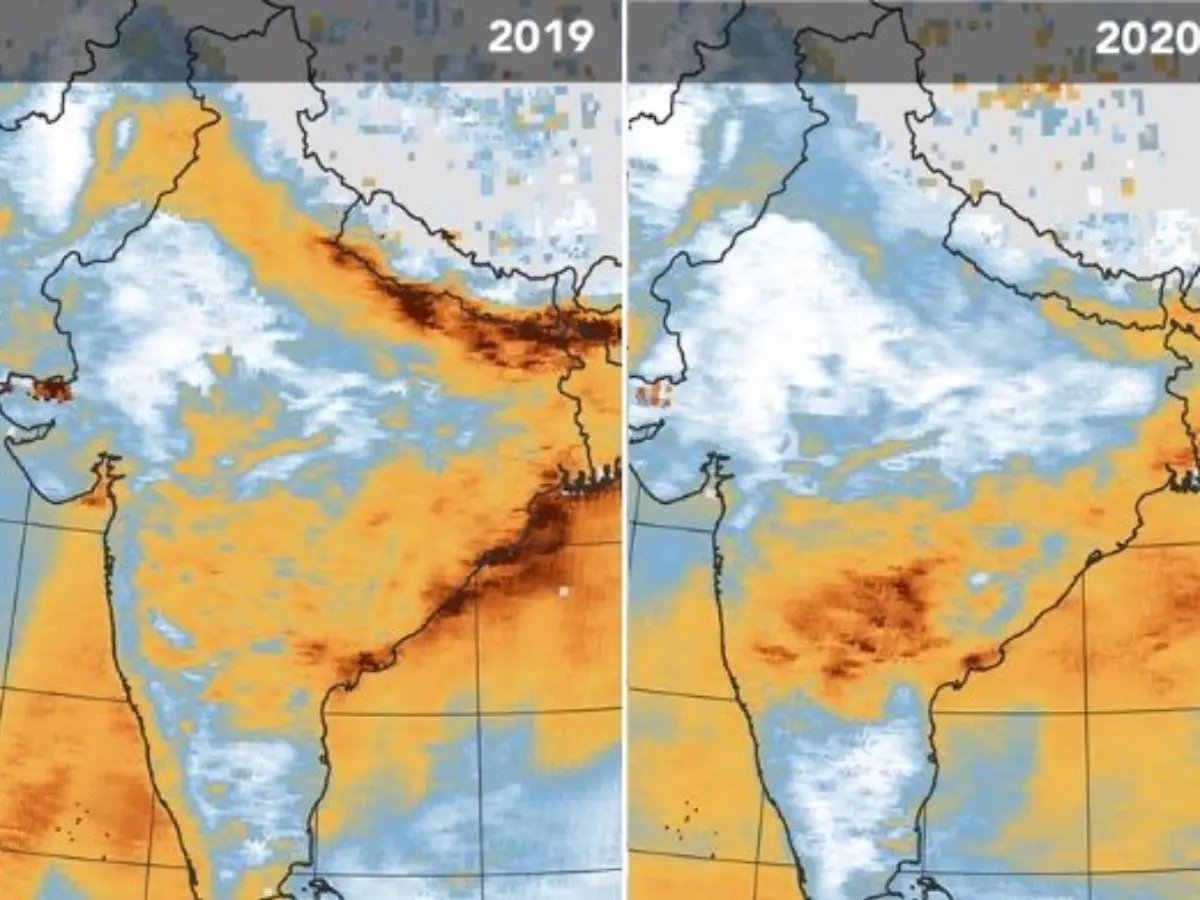NASA Satellite Image Finds Aerosol Levels In North India Have Decreased To A 20-Year Low
NASAs satellites have observed aerosol levels in northern India to be at a 20-year low for this time of year after the country was put under lockdown on March 25. Aerosols can be described as tiny solid and liquid particles suspended in the air that reduce visibility and can damage the human lungs and heart.

We know that air pollution levels over countries that have been put under lockdown around the world, owing to coronavirus outbreak, have plummeted. Now, NASA's satellites have observed aerosol levels in northern India to be at a 20-year low, for this time of year, after the country was put under lockdown on March 25.
A report observes that every year, ¡®aerosols from anthropogenic (human-made) sources contribute to unhealthy levels of air pollution in many Indian cities¡¯. Aerosols can be described as ¡®tiny solid and liquid particles suspended in the air that reduce visibility and can damage the human lungs and heart'.
 Representative Image/Pixabay
Representative Image/Pixabay
The report goes on to mention the different types of aerosols - 'Some aerosols have natural sources, such as dust storms, volcanic eruptions, and forest fires. Others come from human activities, such as the burning of fossil fuels and croplands. Human-made aerosols tend to contribute most of the smaller particles that have greater potential for damaging human health¡¯.
¡°We knew we would see changes in atmospheric composition in many places during the lockdown. But I have never seen aerosol values so low in the Indo-Gangetic Plain at this time of year,¡± the report quotes Pawan Gupta, a Universities Space Research Association (USRA) scientist at NASA¡¯s Marshall Space Flight Center as saying.¡±
 NASA
NASA
The maps compare the aerosol optical depth (AOD) measurements over India during the same period - March 31 to April 5 - for each year, from 2016 through 2020.
The map named anomaly shows how AOD in 2020 compared to the average for 2016-2019. Aerosol optical depth is a ¡®measure of how light is absorbed or reflected by airborne particles as it travels through the atmosphere¡¯.
This data was accumulated by the Moderate Resolution Imaging Spectroradiometer (MODIS) on NASA¡¯s Terra satellite.
Typically, in early spring, in the Ganges Valley of northern India, human activities generate the majority of aerosols. Activities of industries, coal-fired power plants, vehicles produce nitrates and sulfates and other carbon-rich particles.
The report concludes that the 2020 lockdown reduced those human-made emission sources in urban and rural India.
 NASA
NASA
These aerosol levels might increase slightly in the upcoming weeks in parts of India as seasonal dust storms begin.
¡°The hard part with understanding aerosols is that particles can move based on wind patterns and other meteorology. You have to disentangle what is caused by the human fingerprint versus a meteorological factor,¡± the report quotes Robert Levy, program leader for NASA¡¯s MODIS aerosol products, as saying.
In the first few days of the lockdown, scientists believed that there was low aerosol level owing to a combination of rain and the lockdown. But they found that the levels didn¡¯t go up after the rain. The same pattern was not observed in Southern India, but scientists believe that could be owing to wind patterns or the weather.
For the time being, low levels of these particles in the air, mean fresher air for northern India to breathe.
